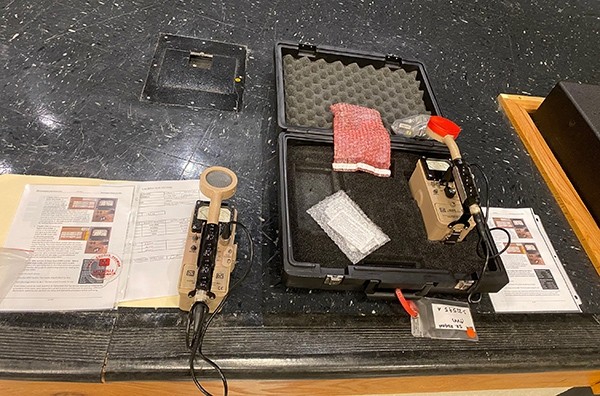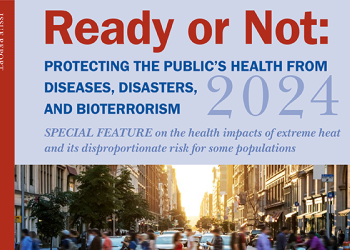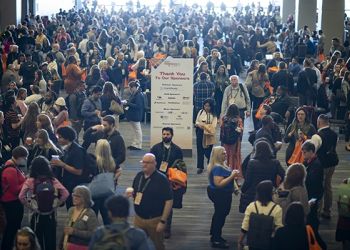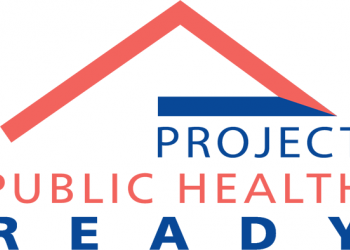Radiation emergencies can be intentional acts like terrorist attacks, or they can be accidents that occur when using radioactive material. A nuclear power plant accident, nuclear explosion, or a dirty bomb are examples of radiation emergencies. These can also be combined with conventional emergencies (a fire or a release of chemical substances), natural disasters, and/or military conflicts.
Public health professionals play an important role in any radiation emergency. Key responsibilities include but are not limited to conducting population monitoring, initiating health surveillance and epidemiological investigations, ensuring safe shelter operations, coordinating the distribution of medical counter measures, and providing protective action and other key messages for the public and other key audiences.
Radiation emergency responses are complicated; they require prompt actions that involve the cooperation of many agencies, and coordination of scarce resources and funding. It is crucial for public health professionals to engage with other response partners in planning, training, and exercising to mitigate a radio-nuclear hazard or its adverse consequences for human life, health, property, or the environment.
How a Region Prepares
The southeast region of Tennessee includes 10 counties and is home to two nuclear power plants. Five of the region’s ten local health departments (LHDs) are part of plant response plans. The LHDs have been involved in monitoring/scanning since the 1980s when the first nuclear power plant went into operations.
Response plans early on called for two nurses from the health department to go to a shelter and perform all the duties necessary to support the community.
“Overtime, we realized that this was not just a clinical process, and that the community would be better served by having all health department staff trained and ready to assist in response activities,” said Robert Goff, Emergency Preparedness Director for the Southeast Region, Tennessee Department of Health.
In the mid-2000s, trainings were expanded to include about 200 throughout the region’s health departments on roles from form intake to portal monitor to how to scan someone. Public health personnel work closely with their counterparts in emergency management.
In addition to expanding the number of personnel trained, the departments have evolved how they prepare including improving their processes and resources.
“In 2016/2017 we began looking at changing forms used,” said Goff. “It was 100% paper-based process which the team realized was not efficient when it comes to long-term epidemiology and surveillance. “
In 2017 the team did an informal exercise with what it would feel like to put more people through. Trainings at the time were based on the facility and training “those who needed it.”
In 2018 the team did its first full-scale exercise in Bradley County. Lauren Finklea, SimPLER Project Lead and User Support with the Centers for Disease Control and Prevention (CDC) was there to gather times and CRC Simpler was taking shape.
Following that training, the team set a goal of having an exercise that FEMA would evaluate. The COVID-19 pandemic put those plans on hold.
“In late 2021 we started talking about what it would take to do a full-scale exercise and gauging FEMA’s interest in evaluating,” said Goff.
Planning meetings began in early 2022 for an Ingestion Pathway Exercise that effected a 50-mile area. Exercise partners included the CDC, the Federal Emergency Management Agency (FEMA), local emergency managem
ent agencies, local health departments, the Southeast Tennessee Medical Reserve Corps (MRC), nuclear plant personnel, the Tennessee Emergency Management Agency (TEMA), translators, and the Tennessee Department of Environment & Conservation Division of Radiological Health. As part of the exercise, NACCHO staff helped with actor cards and some of the control elements and Finklea from CDC was on-site to gather times.
“This exercise was similar to PODs in that you bring people through stations, however, we asked them to take off their clothes and take a shower if contaminated,” said Goff. “People may not know what to expect when they get there. We learned a lot.”
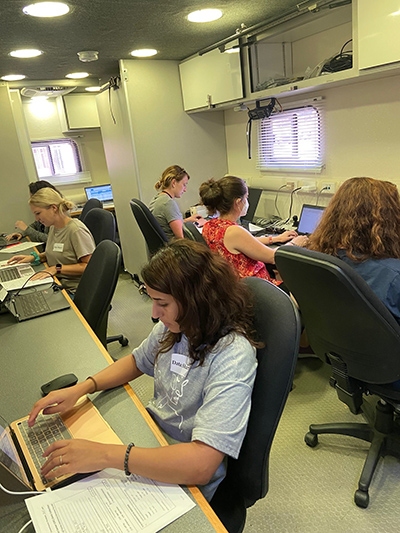
This exercise gave the team an opportunity to test the forms they had been working to streamline. They also adapted the form to make for quick and easy data entry into REDCap. During exercise, a team of nine (2 leads and 7 data entry) entered 171 forms into REDCap in 95 minutes.
“We tried to design system without needing a log-in,” said Goff. “Information can be entered with your own laptop or from somewhere like a school computer lab. With the data available in REDCap, the state can then determine who to share data with as needed and can immediately find people and follow up.”
To assist with planning for inclusivity, participants included a blind individual with a service animal and two deaf individuals.
“We worked with the Partnership for Families, Children and Adults to secure ASL interpreters,” said Amanda Goodhard, Public Information Officer for the Tennessee Department of Heath’s Southeast Region. “They also helped to review materials and suggested we add more pictures. In working with us, the Partnership said that ‘you aren’t going to do it perfectly, but that you’re trying means a lot.’”
To solicit volunteers for the exercise, the team engaged the Southeast Tennessee MRC and did some community recruitment. MRC Unit Leader Melanie Grant polled volunteers for interest and availability to take part, particularly those who would be willing to shower as part of the exercise.
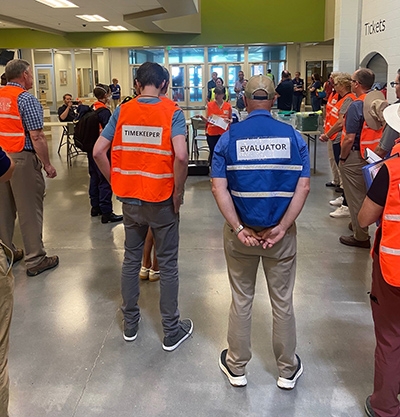
During the exercise, 26 volunteers took a shower (in their bathing suits) which was timed.
“We wanted to understand what it would feel like if it were real,” said Goff. “It’s uncomfortable.”
Knowing this, the team incorporated community education and awareness into the exercise. All the local media stations were invited and one of the larger stations in the area was present for the exercise.
“We took them through process from portal monitor to decontamination,” said Goodhard. “Part of the exercise is to build trust and raise general awareness. We brought them in to help make the process transparent.”
Going forward, the southeast region team plans to continue to build partnerships and resources.
“We collected a lot of data,” said Goff. “How we conduct a just-in-time training. How to improve job aids to make response better.”
In total, 15 different health departments took part in the exercise, including some from outside the region.
“We’re grateful they took the time to be part of the exercise and that they had support from their leadership,” said Goff. “They recognized that a different type of radiological event might occur in their region. Local EMA expressed concern about a transportation issue—now they know who to call.”
In thinking about advice to other jurisdictions who are considering radiological exercises, Goff advises to “crawl, walk, run. Find one piece and go from there. Do a tabletop exercise about portal monitors. Bring in partners. Find the thing that needs to be considered in your jurisdiction. Test those things where appropriate. You don’t prepare for/plan for emergencies overnight. What you can get from the partnership and exercise can be applied to anything.”
Resources for Local Planning:
